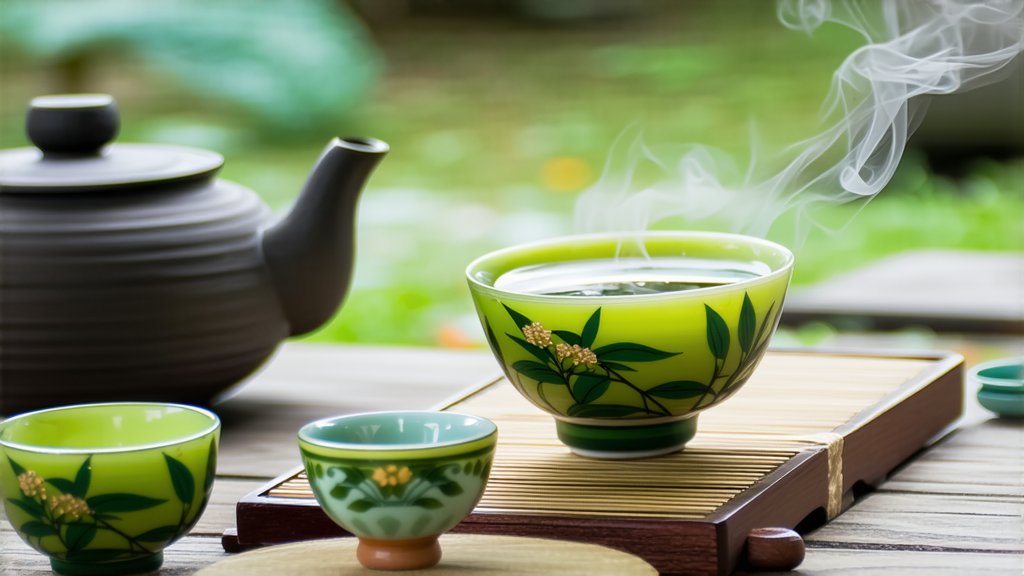
In the verdant hills of Anxi County, located in the southeastern province of Fujian, China, lies an ancient treasure that has been delighting tea enthusiasts for centuries—Tieguanyin, often referred to as the "Fairy Iron Buddha." This exquisite variety of oolong tea is not just a beverage; it's a cultural icon steeped in history, embodying the essence of Chinese tea culture and the artistry of its meticulous crafting process.
A Glimpse into History
The origins of Tieguanyin can be traced back to the early Qing Dynasty, around the late 18th century. Legend has it that the tea was discovered by a poor farmer named Wei Yin, who found a wild tea plant that grew on a rocky cliff in Anxi. He propagated the plant and cultivated it, naming it "Tieguanyin," which translates to "Iron Goddess of Mercy" or "Buddha of Mercy," reflecting both the resilience of the tea plant and its perceived divine quality. Over time, this tea gained immense popularity, becoming one of China's most celebrated teas and earning numerous accolades both domestically and internationally.
Varieties and Characteristics
Tieguanyin falls under the broader category of oolong teas, known for their unique combination of green and black tea characteristics. It stands out among its peers due to its distinct aroma profile, often described as floral with notes of orchid, along with a creamy texture and a sweet aftertaste. The leaves themselves are typically rolled into tight spiral shapes, resembling the form of a snail shell, contributing to its visual appeal.
There are several sub-varieties of Tieguanyin, each with its own nuances in flavor and aroma, influenced by factors such as altitude, soil composition, and cultivation practices. Some of the most renowned ones include Xiangfang (Fragrant Phoenix), Huang Guan Yin (Yellow Crown Iron Goddess), and Rou Gui (Cinnamon). Each variety offers a unique interpretation of what makes Tieguanyin so special.
The Craft of Tea Making
The production of Tieguanyin is a labor-intensive process that requires precision and expertise, involving multiple stages from handpicking to drying. Here’s a glimpse into this intricate journey:
-
Harvesting: Only the youngest shoots and leaves are selected for high-quality tea production, usually during the spring and autumn seasons when the climate conditions are optimal.
-
Withering: Freshly picked leaves are spread out under the sun or left to wither indoors until they lose about 30-40% of their moisture content, turning slightly soft and pliable.
-
Fixation: This step involves briefly roasting the withered leaves in a wok or over a charcoal fire to halt oxidation and preserve the green color.
-
Rolling: The fixed leaves are then rolled between hands or using specialized machines to form the characteristic tight spiral shape, enhancing the release of flavors and aromas during brewing.
-
Oxidation: The rolled leaves undergo partial oxidation, where enzymes interact with oxygen, transforming the chemical composition and developing the unique flavors of Tieguanyin.
-
Roasting: After oxidation, the leaves are roasted at controlled temperatures to further develop their taste, remove excess moisture, and stabilize the final product.
-
Sorting and Grading: Finally, the tea is sorted according to size and quality, ensuring consistency and excellence in every batch.
Art of Appreciation: The Tea Ceremony
Drinking Tieguanyin is not merely about consuming a drink; it's an experience that encompasses all senses and invites contemplation. The traditional Chinese tea ceremony, or "Gongfu Cha," is the preferred method for savoring this tea, emphasizing patience, mindfulness, and respect for the tea's heritage.
Here's a basic outline of the Gongfu Cha ceremony for Tieguanyin:
-
Warming the Teapot and Cups: Begin by rinsing the teapot and cups with hot water to warm them up and cleanse any residual flavors.
-
Measuring the Tea: Use about 5 grams of Tieguanyin per 150ml of water. Place the leaves into a gaiwan (a small lidded bowl) or Yixing teapot made from purple clay, known for its ability to enhance the tea's flavor over time.
-
First Infusion: Pour boiling water (around 95°C) over the leaves, quickly rinse, and discard this initial wash to awaken the leaves and remove impurities.
-
Subsequent Infusions: For subsequent infusions, steep the leaves for approximately 15-30 seconds each time, gradually increasing the steeping time as the leaves unfurl and release more flavors. High-quality Tieguanyin can be steeped multiple times, each infusion revealing different layers of complexity.
-
Appreciating the Aroma and Taste: Before taking a sip, take a moment to appreciate the aroma rising from the cup. Sip slowly, allowing the tea to coat your palate, noticing its smoothness, sweetness, and the subtle changes in flavor with each infusion.
-
Observing the Leaves: After several infusions, examine the unfurled leaves at the bottom of the pot or gaiwan. They should appear vibrant green with a glossy finish, indicating proper handling and high quality.
Conclusion
Tieguanyin is more than just a tea; it's a testament to the rich cultural heritage and craftsmanship embedded within Chinese tea tradition. From its storied past to its meticulous preparation and ceremonial consumption, Tieguanyin embodies the harmony between nature and human skill. As you embark on your own journey exploring this remarkable tea, let each sip transport you to the misty mountains of Anxi, where every leaf tells a story of centuries-old wisdom and artistry.